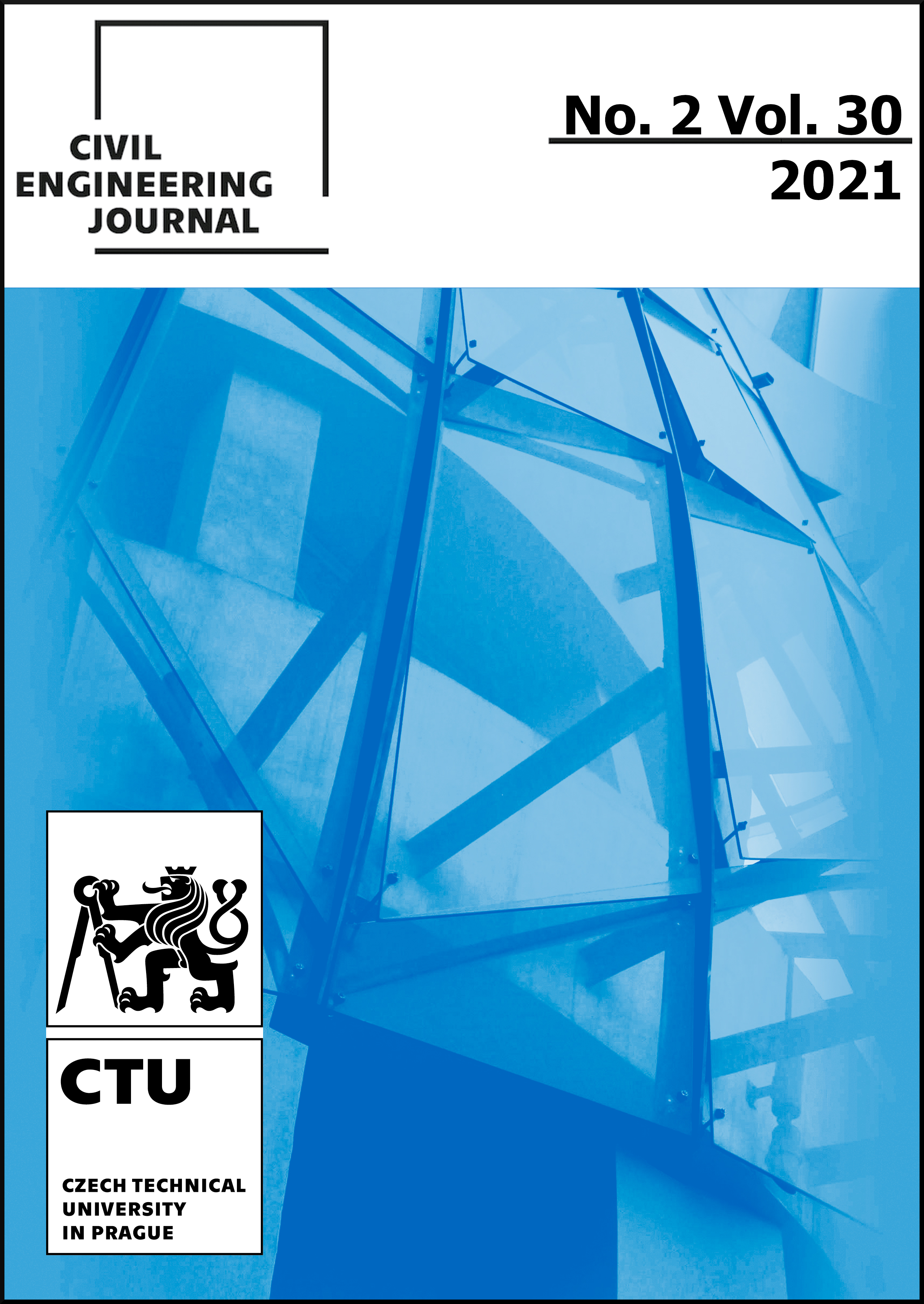Study on the design of heating and energy saving of enclosure structure of rural self-built houses
DOI:
https://doi.org/10.14311/CEJ.2021.02.0044Keywords:
Self-built house, Heating, Enclosure structure, Phase change wallAbstract
For severe cold areas, indoor heating in winter is very important, and it is also important to achieve energy saving and emission reduction in the heating process. This paper briefly introduced a kind of heating envelope structure, the geothermal energy-based phase change wall, and analyzed two rural self-built houses in Shangluo city, Shaanxi province. One self-built house was built without the phase change wall, and the other was built with the geothermal energy-based phase change wall by the municipal government. The results showed that the self-built house that adopted the phase change wall had a better heat preservation effect and relieved the indoor temperature fluctuation; after the heating equipment was turned on, the self-built house that adopted the geothermal energy-based phase change wall had a higher and more stable indoor temperature, and the power consumption during the experiment was less.
Downloads
References
Woodson R., 2015. Radiant Floor Heating, Second Edition. JAMA: The Journal of the American Medical Association, vol. 313: 93-94
Yang E., 2015. Research on Control Property of Low-Temperature Floor Radiant Heating System. Open Construction & Building Technology Journal, vol. 9: 311-315
Kim S.H., Chung K.S., Kim Y.I., 2015. Thermal Comfort Range of Radiant Floor Heating System by Residential Style. Transactions of the Korea Society of Geothermal Energy Engineers, vol. 11: 7-14
Petrichenko M., Tarasova D., Nemova D., 2015. Unsteady Temperature Condition of the Enclosure Structure. Applied Mechanics & Materials, vol. 725-726: 57-62
Feng Y., Nan Y., Zhong H., 2017. Energy-saving and thermal design of the nontransparent enclosure structure for the buildings in southern China. Journal of Civil, Architectural & Environmental Engineering, vol. 39: 33-39
Kong Q.X., Feng J., Yang C.L., 2017. Numerical Simulation of a Radiant Floor Cooling Office Based on CFD-BES Coupling and FEM. Energy Procedia, vol. 105: 3577-3583
Du Y., 2014. Feasibility Analysis of Radiant Floor Cooling and Heating System Applications. Applied Mechanics and Materials, vol. 716-717: 428-430
Ma H., Li C., Lu W., Zhang Z., Yu S., Du N., 2016. Experimental study of a multi-energy complementary heating system based on a solar-groundwater heat pump unit. Applied Thermal Engineering, vol. 109: 718-726
Yu B.H., Seo B.M., Moon J.W., Lee K.H., 2015. Analysis of the Part Load Ratio Characteristics and Gas Energy Consumption of a Hot Water Boiler in a Residential Building under Korean Climatic Conditions. Korean Journal of Air Conditioning & Refrigeration Engineering, vol. 27
Hong S.K., Cho S.H., 2015. The Experimental Study of the Heat Flux and Energy Consumption on Variable Flow Rate for Secondary Side of DHS. Korean Journal of Air-Conditioning and Refrigeration Engineering, vol. 27: 247-253
Shaw B.H., 2018. Infection in Mental Hospitals, with Special Reference to Floor Treatment. Journal of Mental Science, vol. 69: 24-45
Toyoda S., Fujiwara T., Uchida A., Ihibashi J., 2016. ESR dating of sea-floor hydrothermal barite: contribution of 228Ra to the accumulated dose. Nephron Clinical Practice, vol. 43: 201-206
Barzin R., Chen J.J.J., Young B.R., Farid M.M., 2015. Application of PCM underfloor heating in combination with PCM wallboards for space heating using price based control system. Applied Energy, vol. 148: 39-48
Downloads
Published
Issue
Section
License
Copyright (c) 2021 Author

This work is licensed under a Creative Commons Attribution-NonCommercial 4.0 International License.
Authors who publish with this journal agree to the following terms:
- Authors retain copyright and grant the journal right of first publication with the work simultaneously licensed under a Creative Commons Attribution License that allows others to share the work with an acknowledgement of the work's authorship and initial publication in this journal.
- Authors are able to enter into separate, additional contractual arrangements for the non-exclusive distribution of the journal's published version of the work (e.g., post it to an institutional repository or publish it in a book), with an acknowledgement of its initial publication in this journal.
- Authors are permitted and encouraged to post their work online (e.g., in institutional repositories or on their website) prior to and during the submission process, as it can lead to productive exchanges, as well as earlier and greater citation of published work (See The Effect of Open Access).
How to Cite
Accepted 2021-07-12
Published 2021-07-28











